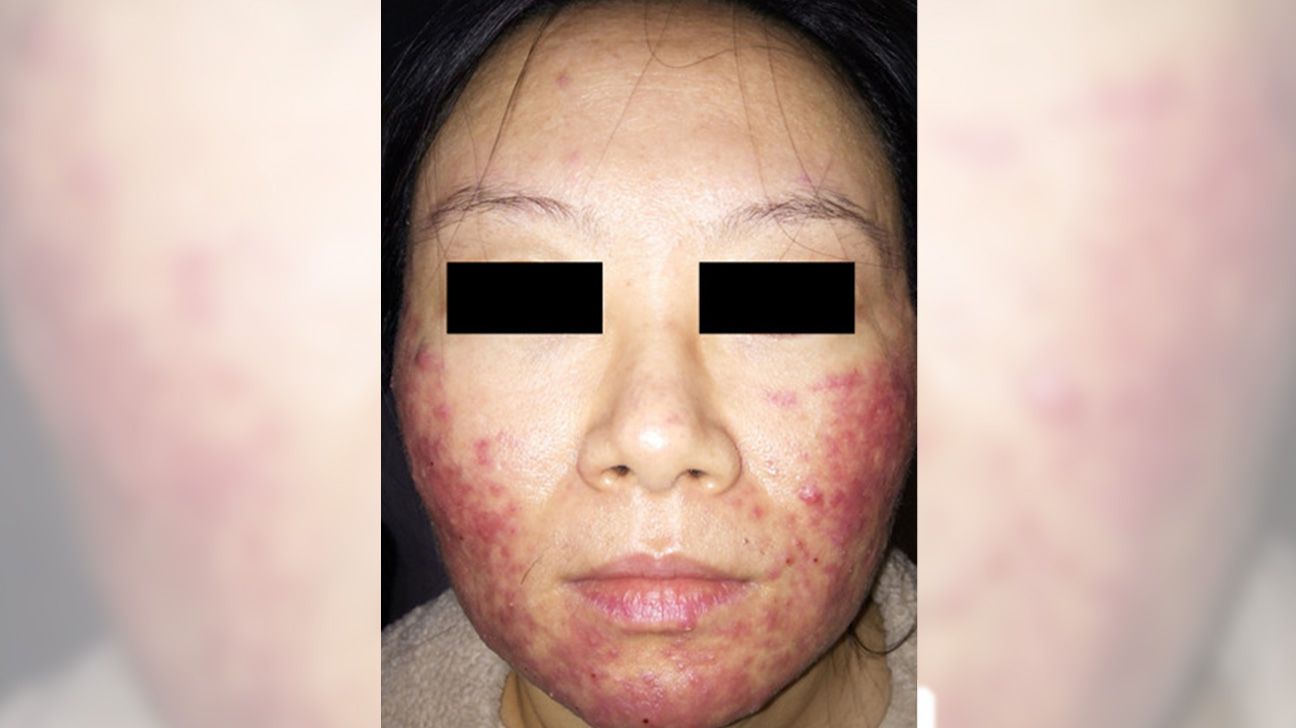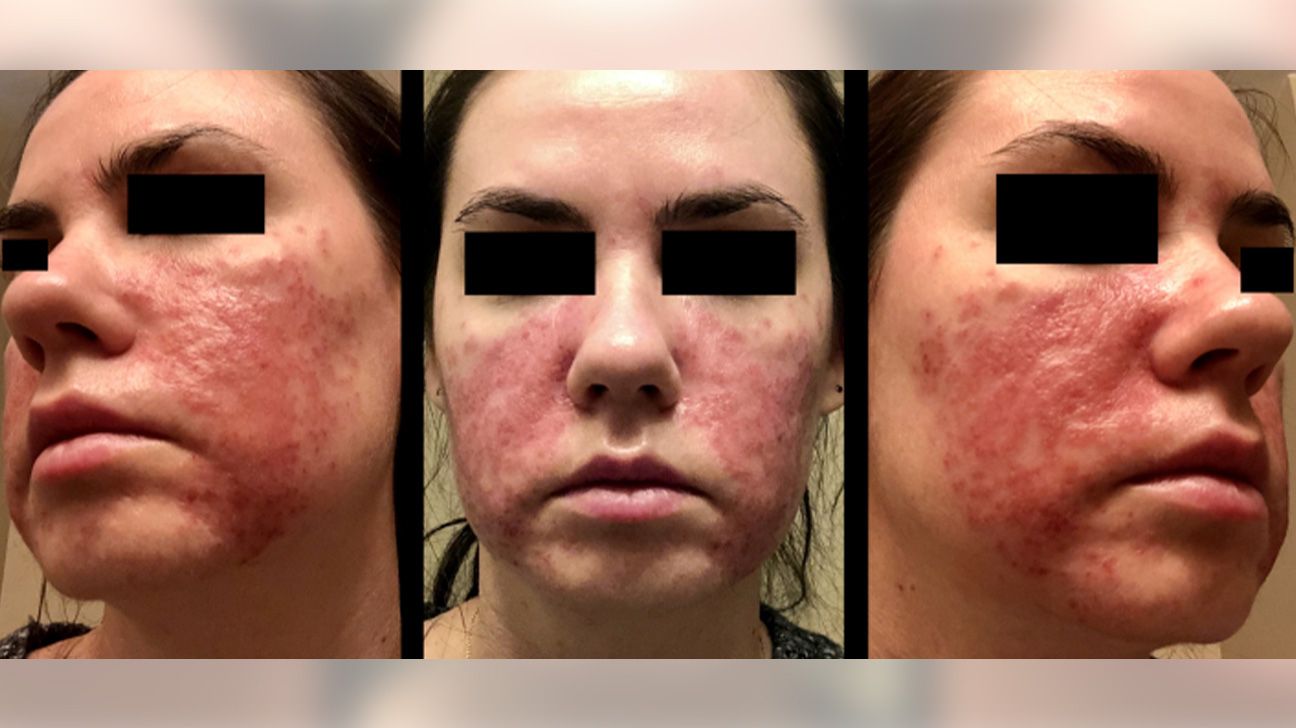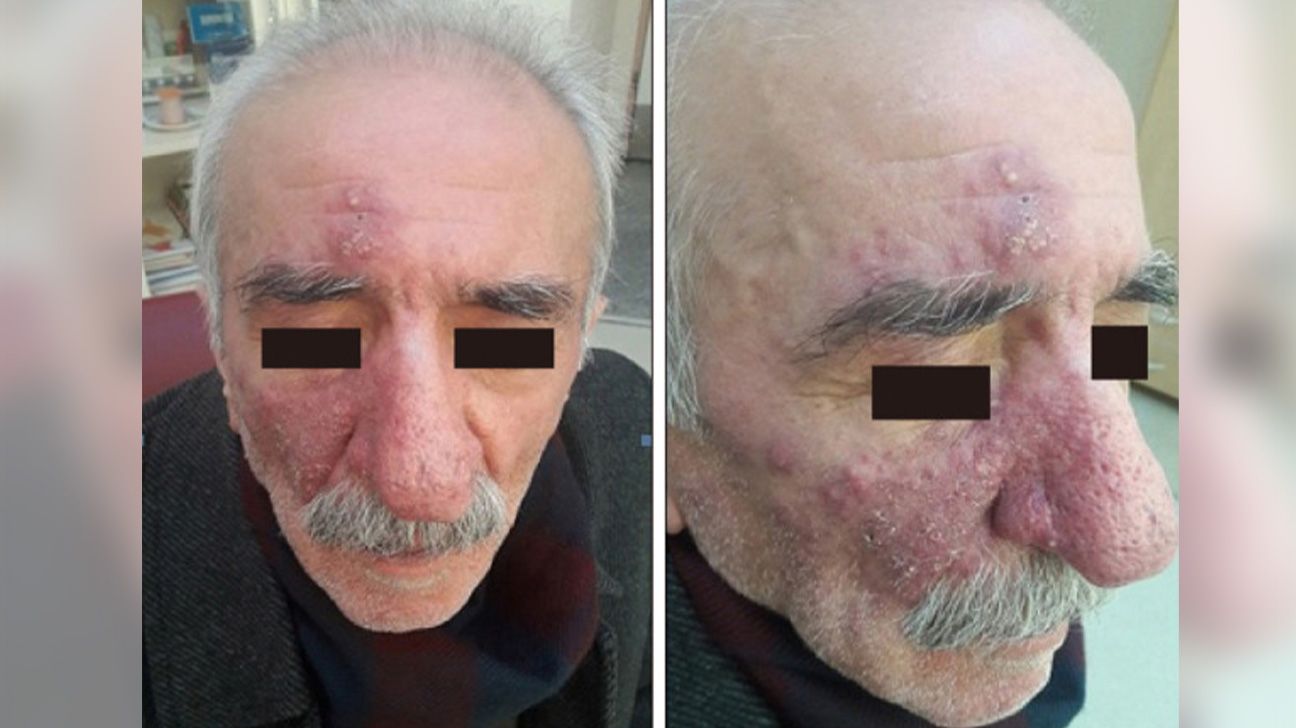Rosacea fulminans is a rare and severe inflammatory skin condition. It typically starts suddenly, and it mostly affects the central part of the face, including the chin, cheeks, and nose.
Also known as pyoderma faciale, rosacea fulminans manifests as flushed, swollen, and painful nodules and pimples that can merge. These symptoms differ from those of rosacea or acne in that they are more severe and come on rapidly.
The condition primarily affects females of childbearing age. However, the exact cause is unknown.
Successful treatment may involve corticosteroids and isotretinoin (Accutane), though some people may also benefit from stress management and diet modification.

The exact cause of rosacea fulminans remains unclear. That said, one 2020 review suggests that there may be a link between rosacea fulminans and other conditions, including inflammatory bowel disease, as well as pregnancy.
Rosacea fulminans may also be more likely to occur in people who have had some type of rosacea before.
Some potential triggers of rosacea fulminans include:
- emotional stress
- hormonal fluctuations
- certain medications
According to a 2021 literature review, certain dietary factors may also trigger or worsen rosacea symptoms. However, it is important to note that this information is not specific to rosacea fulminans.
Potential dietary triggers include:
- spicy foods
- alcohol
- foods that contain cinnamaldehyde, such as:
- chocolate
- tomatoes
- citrus fruits
- histamine-rich foods and beverages, such as:
- wine
- aged cheese
- processed meats
- hot drinks
The review highlights that dietary triggers may vary significantly from person to person. As a result, healthcare professionals do not recommend specific dietary recommendations to all people with rosacea.



Symptoms of rosacea fulminans primarily affect the forehead, nose, cheeks, and chin. They may include:
- sudden onset of severe, localized skin color changes, such as redness
- painful pustules, papules, and nodules that may merge
- swelling and inflammation
- flushing and blushing
- stinging and burning
According to the Revival Research Institute, some people may experience ocular symptoms, such as dry, burning, or itching eyes and light sensitivity.
Systemic symptoms, such as fever and fatigue, are rare.
Treatment options for rosacea fulminans may include oral isotretinoin, which is a prescription-only acne medication. Doctors may also prescribe oral or topical corticosteroids.
In a 2016 case study, antibiotics combined with corticosteroids and lifestyle changes also helped resolve a person’s symptoms.
Since certain factors may trigger or worsen rosacea, a healthcare professional may also suggest identifying and avoiding triggers. This may involve making the following lifestyle changes:
- reducing stress, which may involve:
- making certain dietary changes, such as reducing alcohol
- using gentle skin care products on the face
Combining these strategies with medical treatments, such as corticosteroids and isotretinoin, may improve overall symptom management and quality of life for people with this condition.
A person may benefit from speaking with a dermatologist or another healthcare professional if they:
- experience symptoms that go beyond typical rosacea or acne, such as:
- large, tender nodules
- abscesses
- significant facial discomfort
- have a sudden onset of symptoms
- have symptoms that persist or worsen despite trying over-the-counter medications or rosacea therapies
- notice eye irritation or inflammation
- experience systemic symptoms, including fever
Promptly seeking medical attention is important to receive an accurate diagnosis and begin treatment. Acting quickly may help a person manage their symptoms and reduce the risk of complications associated with rosacea fulminans, such as scarring and infections.
Additionally, early intervention can help address any emotional distress the person may experience, potentially improving their overall quality of life.
Contacting a dermatologist or another healthcare professional means that a person will receive personalized care and comprehensive management strategies specific to their needs and circumstances.
Rosacea fulminans is a rare and severe inflammatory skin condition that typically affects the central face. Symptoms appear suddenly and may include localized skin color changes, like redness, inflammation, and painful nodules or pimples.
Rosacea fulminans primarily occurs in females, though its exact cause is unknown. Treatment involves corticosteroids, isotretinoin, and sometimes stress management and dietary adjustments.
A person can contact a healthcare professional if they experience any symptoms of rosacea fulminans. Seeking prompt diagnosis and treatment may help resolve symptoms faster and prevent complications.


